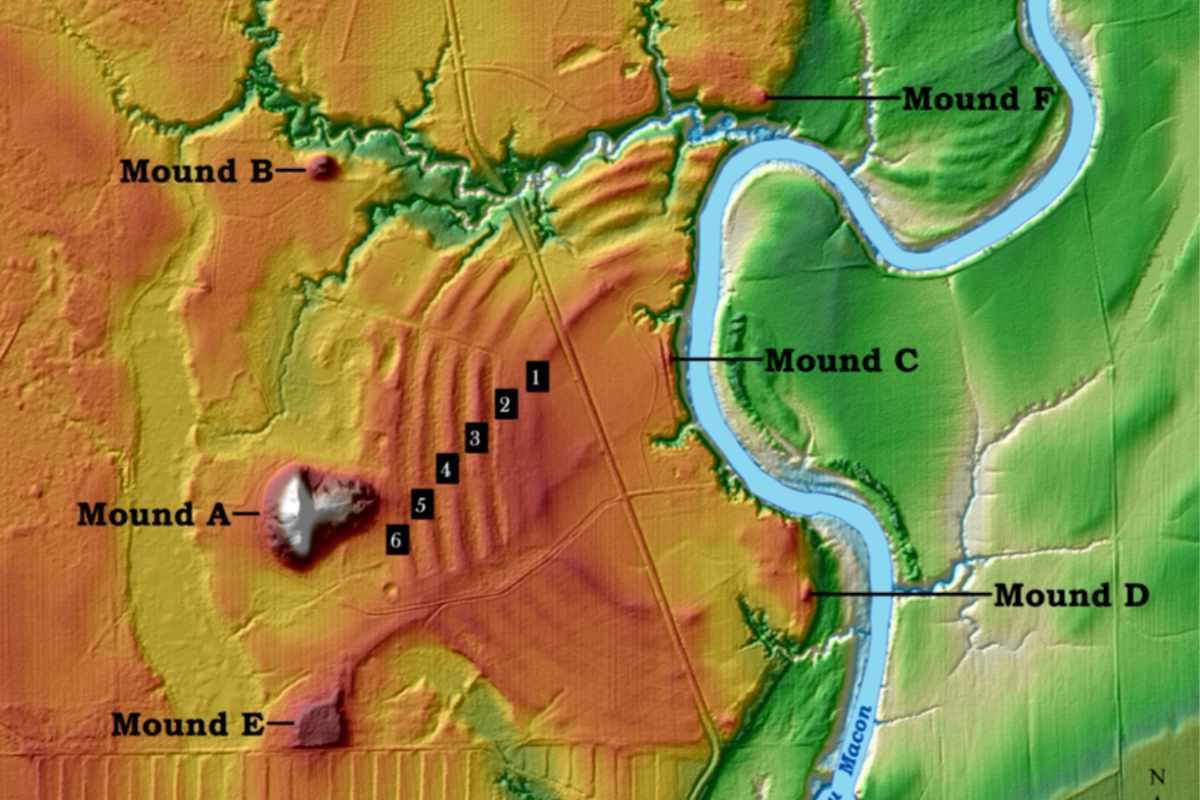
It is often thought that the hunters and gatherers did not like levels of government and the associated negotiations. But an archaeological site in Louisiana tells a different story.
The Native Americans who inhabited northern Louisiana more than 3,000 years ago were considered simple hunter-gatherers. They would have been nomads who wandered in small groups and foraged for food. But re-examined archaeological finds paint a surprisingly different picture of America’s first civilization.
pottery
In Louisiana we find Poverty Point, an impressive archaeological site that consists of a set of prehistoric earthworks. Scientists are amazed at how well these monumental pottery have withstood the test of time. “One of the most remarkable things is that these earthworks have been around for more than 3,000 years,” said researcher Tristram Kidder. “And that without any trace of erosion or signs of subsidence. By comparison, modern bridges, highways and dams fail with astonishing regularity because it is considerably more complicated to build such structures than you might think.”
Poverty Point – which has been on the UNESCO World Heritage List since 2014 – consists of huge, meters high hills and concentric semi-elliptical ridges that extend over an area of about three square kilometers. These adjustments to the landscape were made by hunters and gatherers about 3,400 years ago. Amazingly, this was done without the luxuries of modern tools, domesticated animals, or even wheeled carts. Poverty Point was probably an important religious site for Native Americans on pilgrimage, similar to modern-day Mecca. The place was abruptly abandoned between 3,000-3,200 years ago — most likely due to Mississippi Valley flooding and climate change.
In a new study, researchers took a closer look at the imposing pottery using a variety of research methods. And that leads to an interesting conclusion. The research team assumes that the earthworks were completed surprisingly quickly. So they think the Native Americans built them up in a matter of months or maybe even weeks. The researchers found no signs of weathering, which would have been the case if the builders had even taken a short break.
Politics
According to Kidder, these findings challenge previous notions of how premodern hunters and gatherers behaved. The construction of the enormous earthworks at Poverty Point would have required a very large number of people, who must have worked in a well-organized manner. Moreover, its implementation required good leadership. It means that the Indians must have known some kind of political system. And that while it was thought that the hunters and gatherers did not like administrative layers and the associated negotiations.
“The speed of digging, construction and the sheer amount of soil that was moved betray that the indigenous people came to the site and worked together,” Kidder said. “This in itself is remarkable, because it was assumed that hunter-gatherers weren’t like that.”
Engineers
After the researchers have studied the earthworks again, they can really only draw one conclusion. And that is that the builders must have been very skilled engineers. Far from the simplicity of life sometimes outlined in anthropological books, the indigenous people were significantly more intelligent. For example, they had an impressive ability to build particularly sturdy earthenware that is still intact after thousands of years. In addition, due to its proximity to the Gulf of Mexico, Poverty Point regularly experiences massive amounts of rain, making earthworks particularly susceptible to erosion. Nevertheless, the earthen constructions appear to hold up bravely, which testifies to the exceptional building ability of the Indians. “They were truly incredible engineers with very advanced technical knowledge,” Kidder emphasises.
Microscopic analysis of the soil shows that the Native Americans mixed different types of soil—clay, silt, and sand—in a calculated recipe to make the structures stronger. “Similar to Roman concrete or rammed earth in China, the Native Americans discovered sophisticated ways to mix different types of materials to make structures virtually indestructible,” Kidder said. “There is something magical about it that modern engineers have not yet managed to decipher.”
Source material:
“New evidence supports idea that America’s first civilization was made up of ‘sophisticated’ engineers– Washington University at St. Louis
Image at the top of this article: TR Kidder